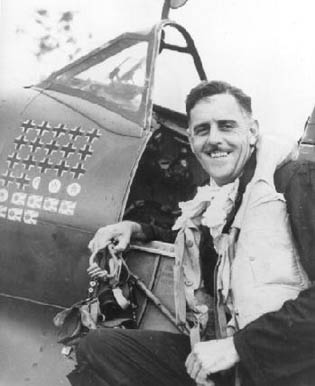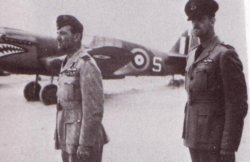
Clive Robertson Caldwell was born in Lewisham, Sydney on the 28th of July, 1911. Pre war he trained for his civil pilot's licence whilst a member of the Royal Aero Club. He joined the RAAF at the beginning of the war in 1939 and was commissioned as a Pilot Officer in 1940. As he was destined to become an instructor after completing his training, he resigned and re-applied as an air-crew trainee. His commission was reinstated in January 1941, and he was sent to the Middle East where he took up flying duties in Tomahawks with 250 Squadron RAF. Following a short period of operations in Syria and Cyprus, Caldwell and the squadron were relocated to the Western Desert. It was in this theatre that he achieved great success during intensive operations.

 Kitty
Hawk of 112 Sqn with 'Killer' Caldwell far right
Kitty
Hawk of 112 Sqn with 'Killer' Caldwell far right